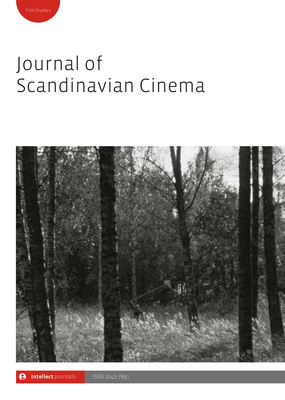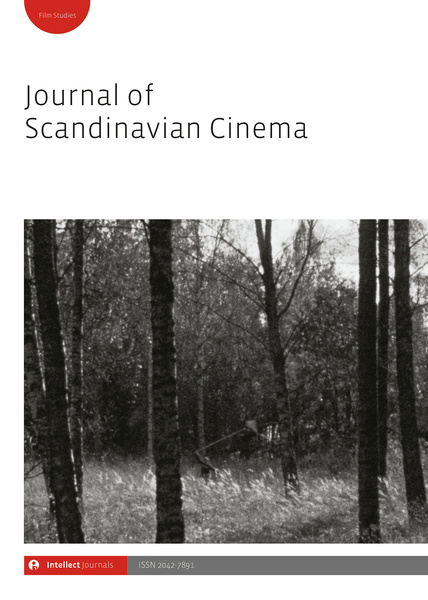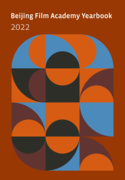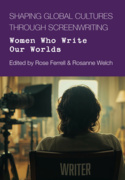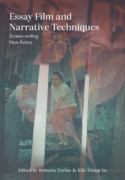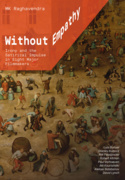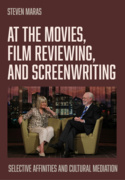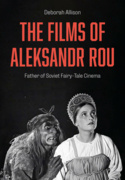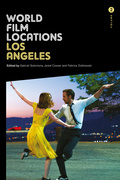General Call for Papers
All articles submitted should be original work and must not be under consideration by other publications.
JSCA is a peer-refereed scholarly journal devoted to all aspects of film culture in Scandinavia (including Finland and Iceland). The journal aims to be an indispensable contributor to the growth of knowledge about Scandinavian filmmaking and to provide a stimulating platform for discussions on Scandinavian cinema and its social and cultural background. The editors welcome full-length articles (4000-8000 words) as well as shorter items such as interviews, conference reports and commented archival documents. Scholars in film studies, Scandinavian studies and related areas are invited to contribute articles that reflect their research and teaching interests and will inspire the exchange of ideas and expertise across nations and disciplines.
Possible research topics include:
- Under-researched historical periods and topics or new approaches to established research areas
- Scandinavian cinema in a global context: the international distribution and reception of Scandinavian films, the work of Scandinavian directors and actors in other countries and representations of the region and its people in international films
- Film industry developments: funding, censorship and technological developments as well as the significance of new, digital forms of distribution and exhibition
- Studies on genre, representation, national cinema and other theoretical concepts
- Scandinavian directors, writers, producers and actors working in film and television, both within the region and internationally
- Inter-art and inter-media discussions - for example, adaptations of literary works and film-television co-productions
- Cinema’s role in the teaching and understanding of Scandinavian culture
- Reports on new research projects and festivals as well as interviews with filmmakers and key persons within Scandinavian film culture
Although JSCA covers all historical periods, a major goal is to keep readers informed about what is going on today. Articles on recent trends, major film releases, ongoing film debates and other aspects of contemporary cinematic culture are particularly welcome.
Journal contributors will receive a free PDF copy of their final work upon publication. Print copies of the journal may also be purchased by contributors at half price.
Special Issue Call for Papers
CFP: Nordic Film Culture in the 21st Century
Guest editors: Eva Novrup Redvall (University of Copenhagen), Anders Grønlund (Lund University) and Pietari Kääpä (University of Warwick)
The Nordic film industries have often cultivated popular approaches and commercially lucrative film culture alongside their reliance on public funding and accompanying calls for cultural and social relevance. The parallel and often intertwined developments of artistic innovation and commercial stability have escalated in the twenty-first century in all five Nordic nations (Denmark, Finland, Iceland, Norway and Sweden), but also in the ‘ultra-small’ contexts of Sápmi, the Faroe Islands, Greenland and Åland.
Technological developments in film production, exhibition and distribution, the globalization of film markets, the rise of social media-integrated streaming services, and the integration of venture capital with national film and TV infrastructure have, on one hand, strengthened opportunities for Nordic films to network internationally. On the other hand, they have destabilized many of the existing structures these film industries rely on, leading to a necessary rethinking of Nordic creative processes, modes of production and film-focused cultural institutions.
Over the past 25 years, Nordic film studies have developed a substantial body of scholarship, including anthologies, monographs and studies of various film and TV themes. The field has expanded to cover areas such as political economy, production frameworks and sustainability policies, solidifying its importance in international film scholarship and reflecting the evolving landscape of Nordic cinema.
Now, a quarter into the first century of this new millennium, it is an opportune moment to reflect on these developments, especially as the film industry faces new crises, from the uncertain financial and cultural impact of streaming services to the disruption of AI and challenges surrounding European identity in a multipolar world. What is the place of Nordic film culture in these debates? How can Nordic film scholarship best respond to a field redefining itself to respond to an increasingly convergent, platformed film and media environment?
This Special Issue of the Journal of Scandinavian Cinema aims to map out some of the main developments that have taken place in the past 25 years. We are interested in articles and short subjects that evaluate continuities and changes inside and across the Nordic film industries, incorporating theoretical approaches ranging from national and transnational film studies to political economy, from sustainability to postcolonial critical analysis.
The editors encourage submissions on the following topics and themes (especially ones that draw connections and comparisons between the different cultural/industrial contexts), but we also welcome work outside or combining these areas:
- Equality, diversity, and inclusion in Nordic cinema: progress and challenges in representation on and off-screen
- Key trends in visual style and storytelling techniques: films and directors shaping aesthetic and narrative developments
- Film agencies, institutions, policy changes and their impact on film production and distribution
- Sustainability, environmental themes and green filmmaking practices
- The cultural significance and global impact of Sámi cinema and Indigenous film production
- Trends and themes in contemporary Nordic documentaries
- The Nordic Film and Television Fund’s influence on the industry
- Film festivals as platforms for Nordic cinema and their contributions to film culture
- Innovative educational Initiatives in film studies and their impact on the next generation of filmmakers and audiences
- New technologies and formats transforming storytelling: web series, VR and interactive films
- Engaging new audiences and the role of user-generated content
- Social, streaming and platform media and their impact on film production and consumption
Projected timeline: Proposals due 15 February 2025. Full article submission due 1 September 2025. All contributions will undergo double blind peer review with publication planned for early 2026. Both feature articles (max 8000 words) and short subjects (2000-3500 words) are welcome.
Please e-mail the guest editors Eva Novrup Redvall (eva@hum.ku.dk), Anders Grønlund (anders.gronlund@litt.lu.se) and Pietari Kaapa (P.Kaapa@warwick.ac.uk) to discuss potential contributions.
In Focus section on: 'Art and film interrelations on Nordic Screens'
This is a call for short subject contributions (2000-3500 words) focusing on the various ways film and television are related to art. As explored by scholars such as Angela Dalle Vacche in Cinema and Painting: How Art Is Used in Film (1996), Steven Jacobs in Framing Pictures: Film and the Visual Arts (2011) and Ivo Blom in Reframing Luchino Visconti: Film and Art (2017), this interrelation takes many forms but remains severely underdiscussed, especially in a Nordic context.
Most obvious examples are perhaps biopics on artists. Recent years have seen a fair number of works on women painters – such as Marie [Krøyer] (Bille August, 2012), Hilma [af Klint] (Lasse Hallström, 2022) and Helene [Schjerfbeck] (Antti J. Jokinen, 2020) – complementing earlier depictions of male artists such as [Anders] Zorn (Gunnar Hellström, 1994) and Edvard Munch (Peter Watkins, 1974). Each film places particular emphasis on the personal and artistic journey. Other works offer representations of different aspects of the creation and exhibition of art, involving (fictional) artists, as in The Painter (Göran du Rées and Christina Olofson, 1982), the work of art dealers, as in A Last Deal (Klaus Härö, 2018), or curators and museum directors, as in The Square (Ruben Östlund, 2017), or a combination of all of these, as in Gabriela Pichler’s series Painkiller (2024).
There is also a long tradition of using art, and specific artworks, as inspiration and reference in films. This includes silent era classics using mise en scène to resemble works of art or illustrations to published books, such as Terje Vigen (Victor Sjöström, 1917), inspired by Christian Krogh’s illustrations of the 1905 edition of Ibsen’s poem, or Synnöve Solbakken (John W. Brunius, 1919), which incorporated elements from nineteenth-century national romanticist paintings such as Adolf Tidemand’s The Haugians (1848). This practice continues today; for example, Aki Kaurismäki’s The Man Without a Past (2002) includes a passing reference to Hugo Simberg’s The Wounded Angel (1903), Arnold Böcklin’s Isle of the Dead (1880) is thematized in Óskar Þór Axelsson’s I Remember You (2017), and Caspar David Friedrich's Woman Before the Rising Sun (1818) suggests a parallel to the protagonist’s mother in Evil (Mikael Håfström, 2003). Films often include works of art as part of the setting – sometimes well-known, but often more difficult or impossible to recognize – adding another layer of meaning. Sometimes, these artworks are used more extensively in the story, as with the framed print of an angel in Lilya 4-ever (Lukas Moodysson, 2002).
As implied throughout Gillian McIver's Art History for Filmmakers: The Art of Visual Storytelling (2019), art can help establish period detail, composition, colour, lighting and many other aspects. Consequently, film workers in various roles draw inspiration from art in their work. Directors, production designers and cinematographers use art to visualize scenes, ensuring a cohesive visual style and emotional tone. Costume designers, makeup artists and visual effects (VFX) artists draw from paintings, sculptures and drawings to design sets, props and costumes, transform actors and create immersive environments and authentic period details. For example, in contemporary global streaming culture, the Norwegian film Troll (Roar Uthaug, 2022), Netflix's most popular non-English film, draws inspiration from Norwegian folklore and classic works such as Theodor Severin Kittelsen’s Troll at the Karl Johan Street (1892). Similarly, Simon Stålenhag's retro-futuristic digital art has been reworked into Amazon’s Tales from the Loop (2020) and Netflix’ upcoming The Electric State (2025), showcasing how visual art can inspire and shape narrative storytelling in new media formats.
As can be seen, there is a plentitude of possible topics, including:
- Artist biopics and their portrayal of artistic journeys
- The use of art and artworks as sources of inspiration for filmmakers
- Diegetic works of art and their varied thematic and narrative functions
- The influence of visual art on aesthetic choices in Nordic cinema
- The role of art in the work of specific filmmaking professionals (e.g., directors, production designers, cinematographers)
- Comparative studies of art references in Nordic and non-Nordic films
Please pull together your creative thoughts and send a brief abstract to anders.marklund@litt.lu.se by 1 April 2025. Finished short subjects are expected no later than 15 September. Make sure that you follow the most recent Notes for Contributors.
Additional note: Part of the 2025 Lübeck Film Studies Colloquium (7-8 November) will be dedicated to Film and Art, as will the Lübeck Nordic Film Days’ retrospective film series. Contributors to this In Focus section are welcome to participate. Please communicate your (preliminary) interest when you submit your proposal.
CFP: Solitude and loneliness in Nordic Cinema
‘The usual thing: loneliness’. This is the response Isak Borg receives in Ingmar Bergman’s Smultronstället (Wild Strawberries) (1957) when asked about his punishment for withdrawing from human companionship. In the Nordic countries, where personal space and independence are valued, solitude and even loneliness can assume meaningful dimensions. International travelers, journalists and researchers often puzzle over the seemingly paradoxical nature of the Nordic welfare states’ ‘almost nearly perfect people’ who at the same time are strangely devoid of companionship and love, caring more about their domestic animals than other people. While many view solitude positively, as a time for reflection and personal growth, especially when spent in nature, long stretches of both voluntary and forced solitude can lead to experiences of loneliness due to a lack of social connections. In this Special Issue, we invite you to join us in exploring the unique aspects of solitude and loneliness in the Nordic context and how these themes are woven into Nordic cinema.
Recently, loneliness has become a major topic in the academic world. It has been studied from numerous perspectives, including those of cognitive neuroscience, as in John T. Cacioppo and William Patrick’s Loneliness: Human Nature and the Need for Social Connection (2008), philosophy, as exemplified by Lars Svendsen’s A Philosophy of Loneliness (2017), and cultural history, as in Fay Bound Alberti’s A Biography of Loneliness (2019). David Vincent’s historical study A History of Solitude (2020) provides an overview of the subject, while Peter Stadius explores it from a regional perspective in his article ‘Happy voluntary solitude? Notes on a Nordic theme’ (2024). Studies on loneliness and solitude in Nordic cinema are scarce, but some research has been done, as demonstrated by Jaakko Seppälä’s articles ‘Loneliness in the films of Aki Kaurismäki’ (2022) and ‘L’Année du lièvre: le bonheur de la solitude dans les forêts de la Finlande’ (2024).
In psychological research, loneliness is defined as social pain, an emotion cluster that stems from a lack of meaningful social connections, causing unhappiness. According to sociologists, loneliness can be a root cause behind surface-level ills, including depression, obesity, alcoholism and suicide. Yet simply being alone is neither positive nor negative, as everything depends on how one is alone. In films such as Risto Jarva’s Jäniksen vuosi (The Year of the Hare (1977), solitude in nature celebrates freedom, reinvigoration and even happiness. Loneliness and solitude are thus two distinct, but related, states of being. Consequently, representations of loneliness and solitude are worth studying from cognitive, cultural and philosophical perspectives, focusing on how films represent the roots and causes of the phenomena. Of particular interest here is the way films represent the relationship between individuals and society. Is it (welfare) society that causes loneliness and solitude or do these conditions stem from individual life choices? And when it comes to curing loneliness, is it the responsibility of the individual or the collective?
The desire to address these themes has inspired Nordic filmmakers to visualize, imagine and understand what loneliness and solitude look, sound and feel like. For cinema, representing these conditions or states of mind in a manner that evokes affect and engagement can be narratively and aesthetically challenging, especially since there are no facial expressions or gestures that correspond to them. Thus it is interesting to study how filmmakers convey the multiple dimensions of loneliness and solitude and how their choices contribute to an understanding of a particularly Nordic sense of being alone.
The editors encourage submissions on the following topics, but we also welcome work outside or combining these areas:
- Fictional and documentary film approaches to loneliness/solitude
- The visual aesthetics of solitude/loneliness
- Narrating solitude/loneliness in visual media
- Sounds and voices conveying solitude/loneliness
- Cinematic representations of solitude/loneliness in the context of other cultural expressions
- Historically contextualized understandings of solitude/loneliness
- Nordic welfare states and loneliness/solitude
- The impact of policies and practices such as neoliberalism
- Social categories related to solitude/loneliness, such as sexuality, gender, class, ethnicity, age
- The social psychology of solitude/loneliness
- Philosophies of solitude/loneliness
- Technology connecting and disconnecting people
- Posthumanist perspectives on solitude/loneliness
Projected timeline: Proposals due: 15 April 2025. Full article submissions due: 15 September 2025. All contributions will undergo double-blind peer review, with publication planned for 15 February 2026. Both feature articles (max 8000 words) and short subjects (2000–3500 words) are welcome.
Please send proposals to guest editors Jaakko Seppälä (jaakko.i.seppala@helsinki.fi) and Outi Hakola (outi.j.hakola@helsinki.fi). Feel free to contact them to discuss potential contributions.

